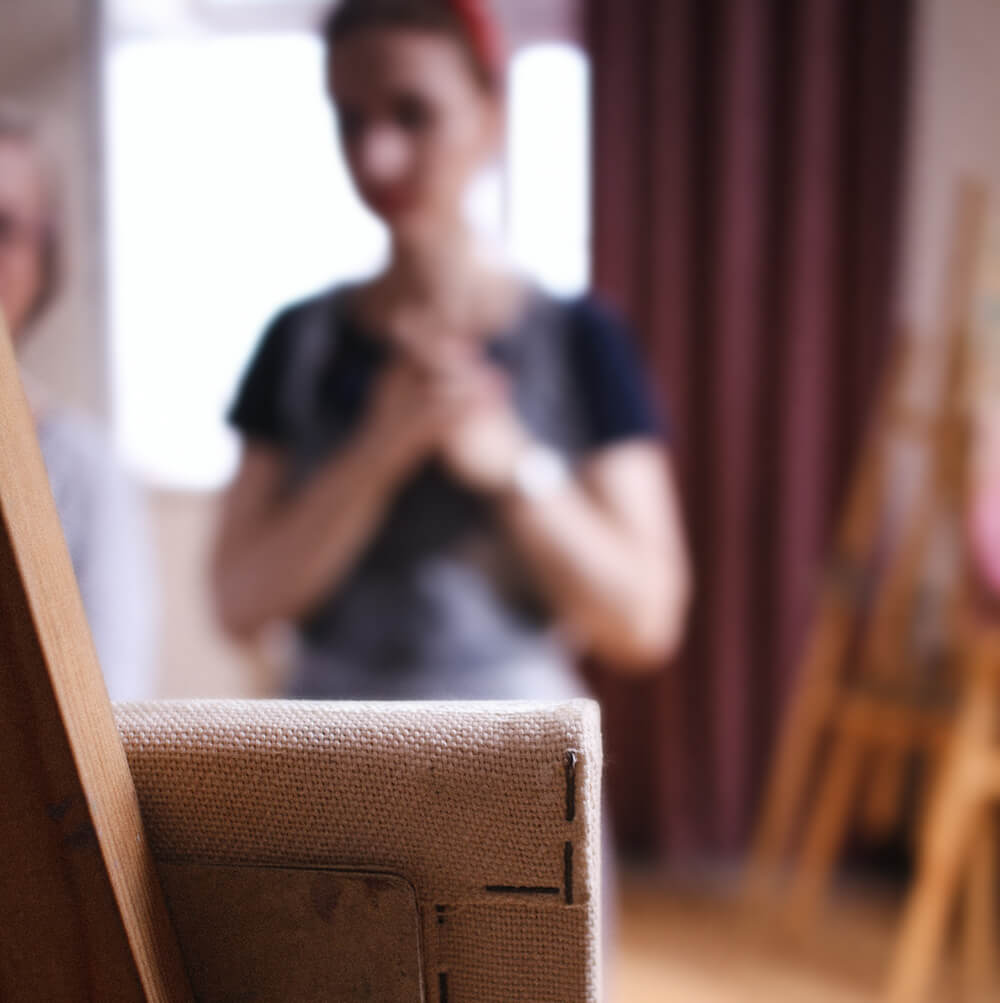Last week on EmptyEasel I listed a few ways to handle having your own artwork critiqued. Today’s article will be exactly the reverse—how to give a good critique.
It really is important because at some point you’ll probably find yourself in a group critique situation—and what you say (and how you say it) will start to matter a lot more. So without further ado, here are some suggestions I came up with for anyone giving a critique.
1. Take a look through the artist’s eyes
If you’re going to be critiquing another artist’s work, it helps to know where they’re coming from.
In general, I find it difficult to get a sense of an artist from just one or two paintings, so I like to see several if I can, before critiquing. Having the artist explain what was intended helps too.
If what they’re saying and what you’re seeing doesn’t mesh, then that gives you a place to start. If their intent IS coming through, think about ways to help enhance their vision even more.
2. Don’t nit-pick the little stuff
Oddly shaped ears, squarish trees, or an off-color sky. . . Sometimes it’s helpful to point out those flaws, but if there are really a lot of them, focus on the big picture instead.
With technical issues like those, I will usually suggest spending more time in preliminary sketching or I’ll mention the importance of having a strong light source that shows detail. Sure, listing each flaw might help the artist fix this painting, but what about the next one? You can’t always be there.
It’s much better to help them improve their technique or process ONCE than fix the end-results a hundred times.
Of course, if the artist asks for a nit-picky critique (and some will) then go ahead. It might not be the best way to help, but at least you know they won’t mind.
3. Start positive and end positive
Always make sure to start off by saying something nice. Even if it’s difficult, find something to say.
After that, be honest and clear about the issues you see in the artwork—without being brutal—then close with another encouraging, positive statement.
Many artists will be sensitive about the work they created (after all, they poured their heart and soul into it!) so it just makes sense to cushion the blows a little bit.
4. Never be vague
There’s nothing worse than a vague critique. They usually sound a little bit like this:
“There’s something about your painting that‘s not right. . . I don’t know what, it’s just, you know. . . Something.”
The truth is, if you don’t have anything to say about the painting it’s probably better to not speak up in a group critique.
On the other hand, if you’ve got a gut feeling about it, do your best to figure it out so you CAN critique it correctly.
5. Lastly, keep it short
I’ve never yet been in a group critique where time wasn‘t a factor. Say your piece and be done.
Remember, the point of a critique is to help artists improve. If you aim for that you won’t go to far wrong.
This post may contain affiliate links.


